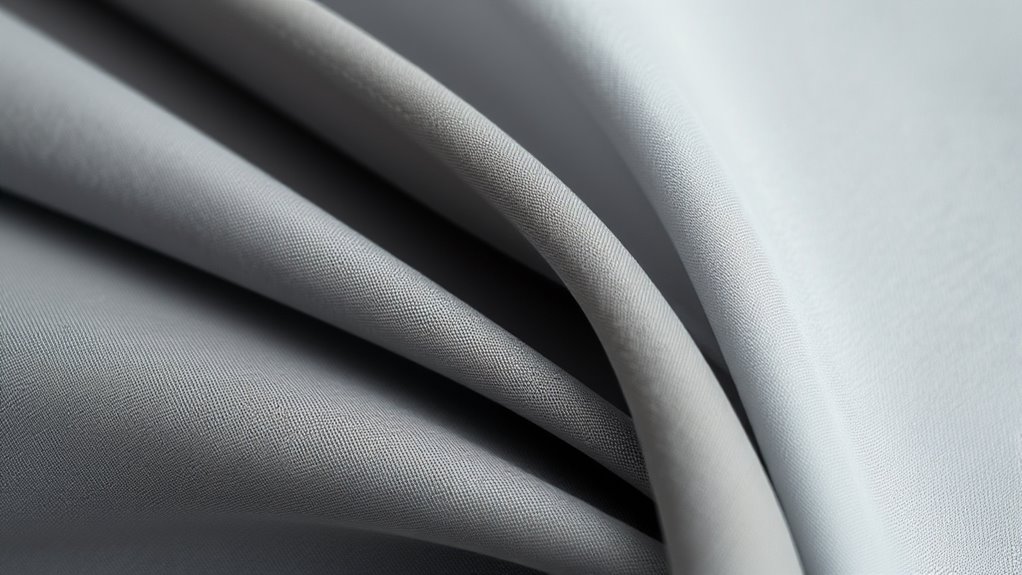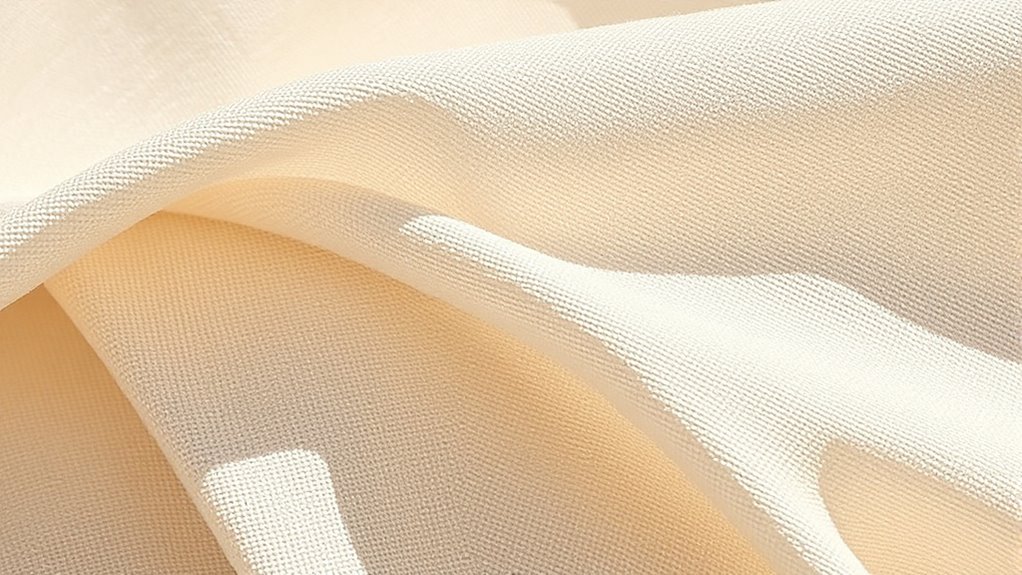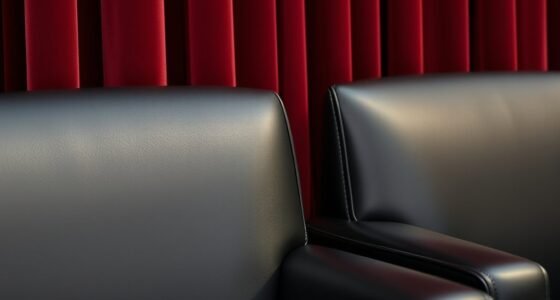Tone-on-tone palettes use subtle variations of a single color, creating a cohesive and sophisticated look. You’ll notice this design approach playing with different hues, saturations, and brightness levels, offering depth without chaos. By combining textures and finishes, it keeps your space interesting and layered while maintaining harmony. If you want to explore how these gentle differences can transform your environment into something elegant and calm, keep exploring further.
Key Takeaways
- Tone-on-tone palettes use variations of a single color to create a unified, sophisticated look with subtle differences in hue, saturation, and brightness.
- These palettes emphasize texture interplay through contrasting materials and finishes, adding depth without disrupting color harmony.
- Selecting shades within the same color family fosters seamless flow and a calming, balanced visual environment.
- Incorporating different surface textures, like matte and glossy, enhances visual interest and tactile richness.
- Achieving a layered, dynamic space relies on balancing shades, textures, and finishes for an elegant, subtle aesthetic.

Tone-on-tone palettes create a sophisticated and cohesive look by using variations of a single color. When you choose this approach, you’re intentionally playing with subtle differences in hue, saturation, and brightness to craft a space that feels unified yet visually interesting. The key to mastering tone-on-tone design is understanding how texture interplay and color harmony work together. Texture interplay involves combining different surfaces—like matte walls with glossy furniture or woven textiles with smooth finishes—to add depth without disrupting the overall monochromatic scheme. This contrast in textures keeps your space from feeling flat, giving it a layered, tactile quality that invites closer inspection and adds a sense of comfort.
Tone-on-tone design combines varied textures and subtle color differences for a refined, cohesive space.
Additionally, considering support hours for your design consultations or shopping trips can help ensure you access the best resources and advice.
Color harmony is the backbone of tone-on-tone palettes. When you select shades within the same family, you’re creating a seamless flow that’s easy on the eyes. The varying shades work in harmony, emphasizing the natural gradation of a single color and preventing visual chaos. For example, pairing soft beige walls with darker taupe furniture and lighter cream accents enhances the sense of cohesion. This harmony allows your eyes to naturally glide across the space, making it feel calm and balanced. To refine this effect, consider the undertones of your chosen shades—warm or cool hues—and make sure they complement each other. When colors are in harmony, they support one another, creating a tranquil environment that feels intentional and refined.
As you integrate different textures within your tone-on-tone palette, think about how each element interacts. A plush velvet sofa next to a matte-finished coffee table, for instance, creates a tactile contrast that adds visual interest without breaking the color unity. The interplay of textures makes the space appear layered and dynamic, drawing your attention to the subtle details that might otherwise go unnoticed. When selecting your materials and finishes, focus on their tactile qualities and how they reflect or absorb light. This careful consideration enhances the richness of your palette and reinforces the overall sense of cohesion.
Ultimately, tone-on-tone palettes thrive on balance. By carefully selecting shades that are close in hue but vary in texture and finish, you achieve a sophisticated aesthetic that feels both calming and engaging. Texture interplay and color harmony work hand-in-hand, making your space feel thoughtfully curated and visually compelling. When you master these elements, your monochromatic scheme becomes more than just a color choice—it becomes a carefully crafted environment that exudes elegance and subtlety.
Frequently Asked Questions
How Do Tone-On-Tone Palettes Affect Room Ambiance?
Tone-on-tone palettes create a calming, sophisticated ambiance in your room. By using monochromatic harmony, you make the space feel cohesive and unified. These subtle variations add visual depth, preventing the room from looking flat or dull. You’ll notice a gentle, layered effect that enhances the overall atmosphere, making your space feel more inviting and elegant without overwhelming it with bold colors.
Can Tone-On-Tone Palettes Be Used Outdoors Effectively?
Imagine your outdoor space as a resilient garden where tone-on-tone palettes blossom beautifully. Yes, they can be used outdoors effectively, but focus on choosing colors with strong outdoor durability and weather resistance. These subtle variations create an elegant, unified look that withstands sun, rain, and wind. By selecting durable, weather-resistant finishes, you guarantee your outdoor tone-on-tone design stays fresh and sophisticated year-round.
What Are Common Mistakes When Designing With Tone-On-Tone?
When designing with tone-on-tone, you often overuse monochrome, making your space feel flat and dull. Neglecting contrast is a common mistake that can reduce visual interest and depth. To avoid this, incorporate subtle variations in shade and texture, and balance lighter and darker tones. This creates a sophisticated, cohesive look without sacrificing dimension, ensuring your design remains engaging and visually appealing.
How Do Lighting Choices Impact Tone-On-Tone Color Schemes?
Lighting effects are your secret weapon in tone-on-tone schemes, shaping how color depth unfolds. Think of lighting as a painter’s brush—soft, warm, or dramatic—to highlight subtle variations and add dimension. You’ll find that the right lighting choices deepen shadows and brighten highlights, making the subtle nuances stand out. Without proper lighting, your carefully selected tones risk flattening, losing their elegant complexity. Adjust lighting to bring your palette’s depth to life.
Are Tone-On-Tone Palettes Suitable for Small Spaces?
Yes, tone-on-tone palettes work well in small spaces. They create a seamless, calming look that makes rooms feel larger. You can add interest by mixing furniture textures and incorporating decorative accents in slightly different shades or materials. These subtle variations keep the space engaging without overwhelming it. Just make certain good lighting to highlight the depth and keep the room feeling open and inviting.
Conclusion
Now that you’ve embraced tone-on-tone palettes, you’re practically a master of subtle sophistication. With just a whisper of variation, you can transform any space into a symphony of elegance—so refined, so seamless, it’s like magic. Remember, with these palettes, you hold the power to turn the simplest shades into a breathtaking masterpiece. Get ready to wow everyone with your understated genius, because when it comes to tone-on-tone, you’ve truly released the art of understated perfection!









